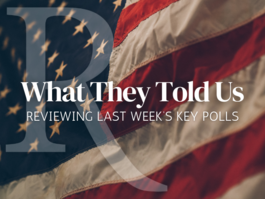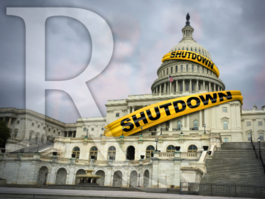Biden Out
A Commentary By Kyle Kondik
Clinton, now more than ever
The decision by Vice President Joe Biden to pass on the presidential race confirms what would have been true even if he had entered the contest: This is Hillary Clinton’s race to lose.
Biden’s exit strengthens her position, because it has become clear that Biden was taking more support away from Clinton than from the more liberal Bernie Sanders in polls. For instance, Clinton leads Biden and Sanders 45%-29%-18%, respectively, in a CNN poll conducted after the first debate. But it’s 56%-33% Clinton over Sanders when Biden was removed. Note that Sanders only gained four points without Biden but Clinton gained 11. A new Monmouth University poll showed effectively the same thing (as do others).
We have written extensively about the advantages that Clinton holds over Sanders:
— Nonwhite voters still disproportionately support Clinton over Sanders and other Democrats. This will help her when the nomination contest moves past the lily white leadoff states of Iowa and New Hampshire into the more diverse states of South Carolina, Nevada, and the collection of southern states that vote in the March 1 “Southeastern Conference” primary. Sanders has done an impressive job keeping pace with Clinton’s conventional fundraising, but she should have much more support on the airwaves from Super PACs. Sanders also says he doesn’t want to go negative on Clinton. We know that Clinton will have no such reservation about mercilessly attacking the Vermont senator, if it comes to that.
— The Democratic Party leadership is firmly behind Clinton. More than half of the sitting Democratic members of the House and Senate have already endorsed her, and she continued to win endorsements even as the Biden hype was increasing. The lack of support from these party leaders ultimately helps explain why Biden didn’t take the plunge. It reminds us of when Mitt Romney considered running this cycle. He received a cool reception from party leaders and in January opted against a run.
— Superdelegates, the 700 or so free-agent party leaders who are not pledged to candidates throughout the primaries, already largely support Clinton. This includes those elected officials mentioned previously. Her campaign argued in late August that she already had the support of more than half of the total superdelegates. Leaders of the Democratic Party are afraid of Sanders: Many believe he is unelectable in the fall against a mainstream Republican (if one is nominated).
Now, there is a scenario in which Biden (or someone else) could be the Democratic nominee, which we laid out recently. If Clinton is eliminated from the race by virtue (vice?) of an indictment, health problem, or something on that order, Biden could effectively replace her and probably would be able to snatch the nomination away from Sanders at the Democratic convention. The superdelegates could form the base of his late challenge, and given that Biden is ideologically closer to Clinton than he is to Sanders, one would assume that most of Clinton’s delegates would flock to someone like Biden as opposed to Sanders or another candidate.
Vice presidents are stand-by equipment, after all, so this would be an appropriate role for Biden.
But Biden has given up the possibility of defeating Clinton and Sanders in the conventional way, through the primaries.
So the race remains as it was. Despite Sanders’ strong fundraising and appeal to the left wing of the party, Clinton still retains more than enough strength to win the nomination. If she isn’t the Democratic nominee, it will have more to do with her own mistakes and missteps than what Sanders or her other rivals do in the campaign.
Table 1: Crystal Ball rankings of 2016 Democratic presidential candidates
| First Tier: The Undisputed Frontrunner | |||
| Candidate | Key Primary Advantages | Key Primary Disadvantages | |
|---|---|---|---|
 |
Hillary Clinton Ex-Secretary of State |
•Still stronger than she was eight years ago •Overwhelming support from party leaders •Dual support from women, minorities hard to overcome, particularly after Iowa and New Hampshire |
•Danger signs in early states could snowball •Private e-mails, Clinton Foundation scandals still playing out •Has yet to prove she is a strong candidate who can build a solid campaign •Keeping Bill in check — and on the porch |
| Second Tier: The Leading Challenger | |||
 |
Bernie Sanders Senator (Ind.), VT |
•New Hampshire and maybe Iowa could help him get off to strong start •Small-donor fundraising strength •Drawing big crowds |
•Outsider in what is very much an insider process •Little appeal to nonwhite voters •Big crowds don’t predict wins |
| Third Tier: The Others | |||
 |
Martin O’Malley Ex-Governor, MD |
•Liberal record and policy achievements | •Baltimore baggage •Candidacy largely invisible so far |
 |
Lincoln Chafee Ex-Governor, RI |
•Voted against Iraq war | •Left office very unpopular •No base of support in party, nationally unknown |
 |
Larry Lessig Harvard Law Professor |
•Emphasizing campaign finance reform, a big issue for some Democrats | •Those looking for a liberal protest candidate already have Sanders •Not prominent in Democratic Party |
Kyle Kondik is a Political Analyst at the Center for Politics at the University of Virginia.
See Other Political Commentary by Kyle Kondik
See Other Political Commentary
Rasmussen Reports is a media company specializing in the collection, publication and distribution of public opinion information.
We conduct public opinion polls on a variety of topics to inform our audience on events in the news and other topics of interest. To ensure editorial control and independence, we pay for the polls ourselves and generate revenue through the sale of subscriptions, sponsorships, and advertising. Nightly polling on politics, business and lifestyle topics provides the content to update the Rasmussen Reports web site many times each day. If it's in the news, it's in our polls. Additionally, the data drives a daily update newsletter and various media outlets across the country.
Some information, including the Rasmussen Reports daily Presidential Tracking Poll and commentaries are available for free to the general public. Subscriptions are available for $4.95 a month or 34.95 a year that provide subscribers with exclusive access to more than 20 stories per week on upcoming elections, consumer confidence, and issues that affect us all. For those who are really into the numbers, Platinum Members can review demographic crosstabs and a full history of our data.
To learn more about our methodology, click here.



